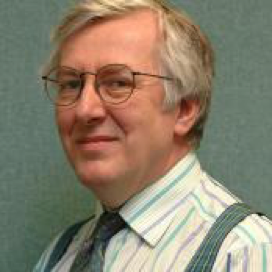A World Leading Research Programme Opening up the Terahertz Spectrum
UCL, Cambridge University and the University of Leeds are opening up the terahertz spectrum for widespread application through an EPSRC funded research programme. Find out more details about our exciting vision and ambition...

The terahertz (THz) frequency region within the electromagnetic spectrum, covers a frequency range of about one hundred times that currently occupied by all radio, television, cellular radio, Wi-Fi, radar and other users and has proven and potential applications ranging from molecular spectroscopy through to communications, high resolution imaging (e.g. in the medical and pharmaceutical sectors) and security screening. Yet, the underpinning technology for the generation and detection of radiation in this spectral range remains severely limited, being based principally on Ti:sapphire (femtosecond) pulsed laser and photoconductive detector technology, the THz equivalent of the spark transmitter and coherer receiver for radio signals. The THz frequency range therefore does not benefit from the coherent techniques routinely used at microwave/optical frequencies. Now an EPSRC Programme grant awarded to leading Terahertz researchers at UCL, Cambridge and Leeds universities and the London Centre for Nanotechnology will address this.

We have recently demonstrated optical communications technology-based techniques for the generation of high spectral purity continuous wave THz signals at UCL, together with state-of-the-art THz quantum cascade laser (QCL) technology at Cambridge/Leeds. We will bring together these internationally-leading researchers to create coherent systems across the entire THz spectrum. These will be exploited both for fundamental science (e.g. the study of nanostructured and mesoscopic electron systems) and for applications including short-range high-data-rate wireless communications, information processing, materials detection and high resolution imaging in three dimensions.
Our vision is to open up the THz spectrum for widespread scientific and commercial application, through the use of photonics-enabled coherent techniques. This will be achieved by bringing together optical communications technology-based techniques, for the generation of high spectral purity continuous wave (CW) THz frequency signals, with state of-the-art THz quantum cascade laser (QCL) technology.
The THz frequency region is the last unexploited part of the electromagnetic spectrum. Now we hope to change that. Our ambition for this Programme is that it will lead to this historically underused part of the electromagnetic spectrum finally achieving its full scientific and commercial potential. We will work with many commercial partners to achieve this.

